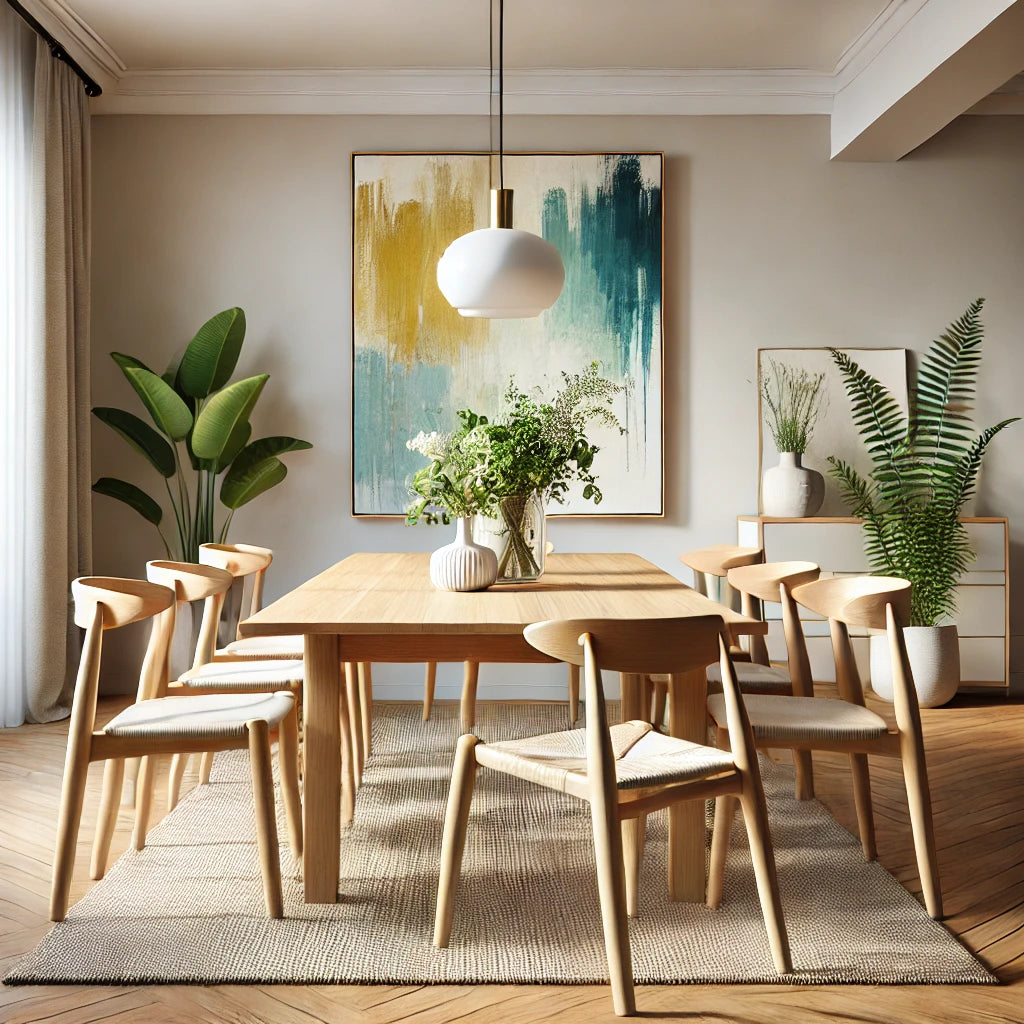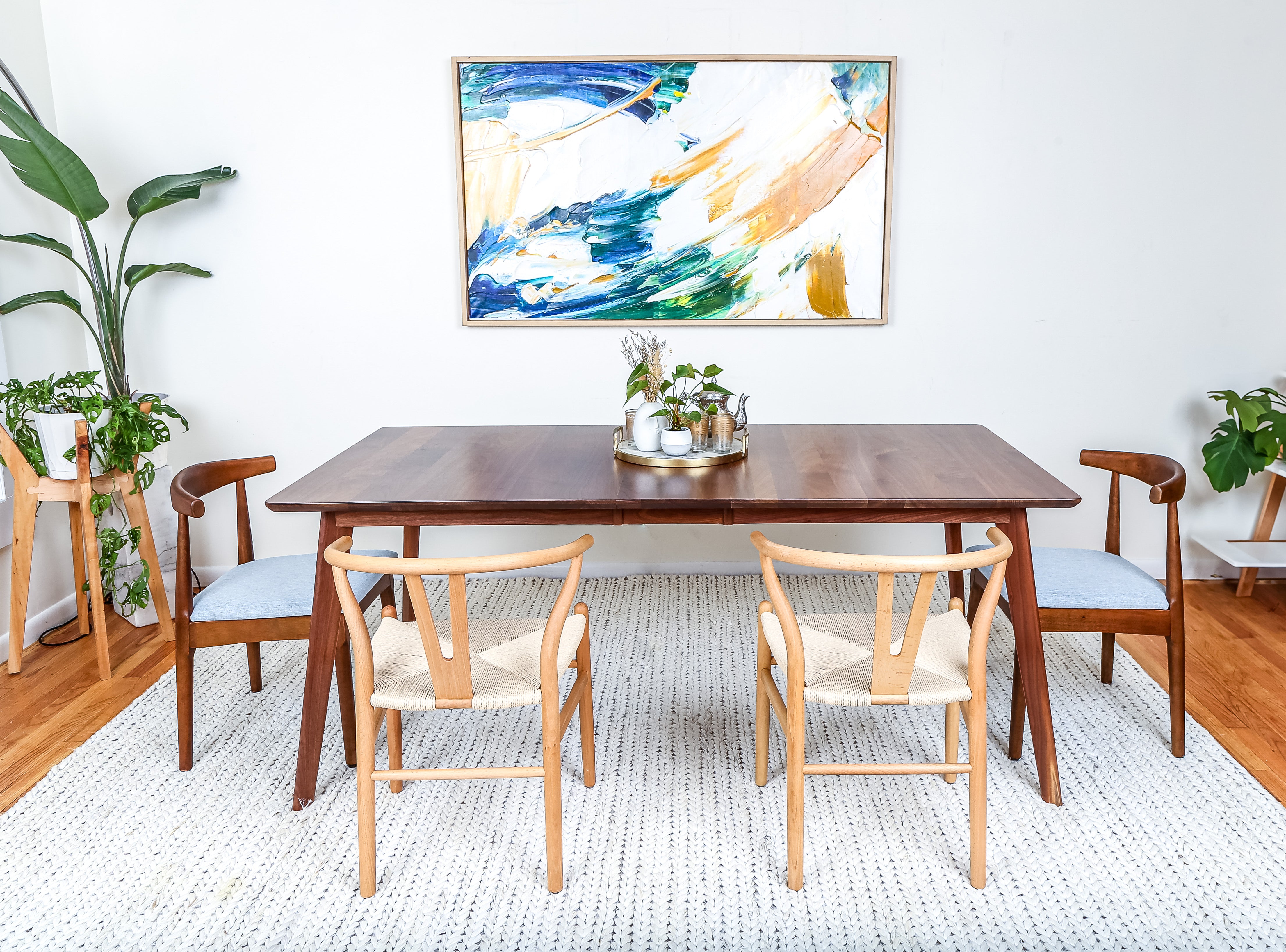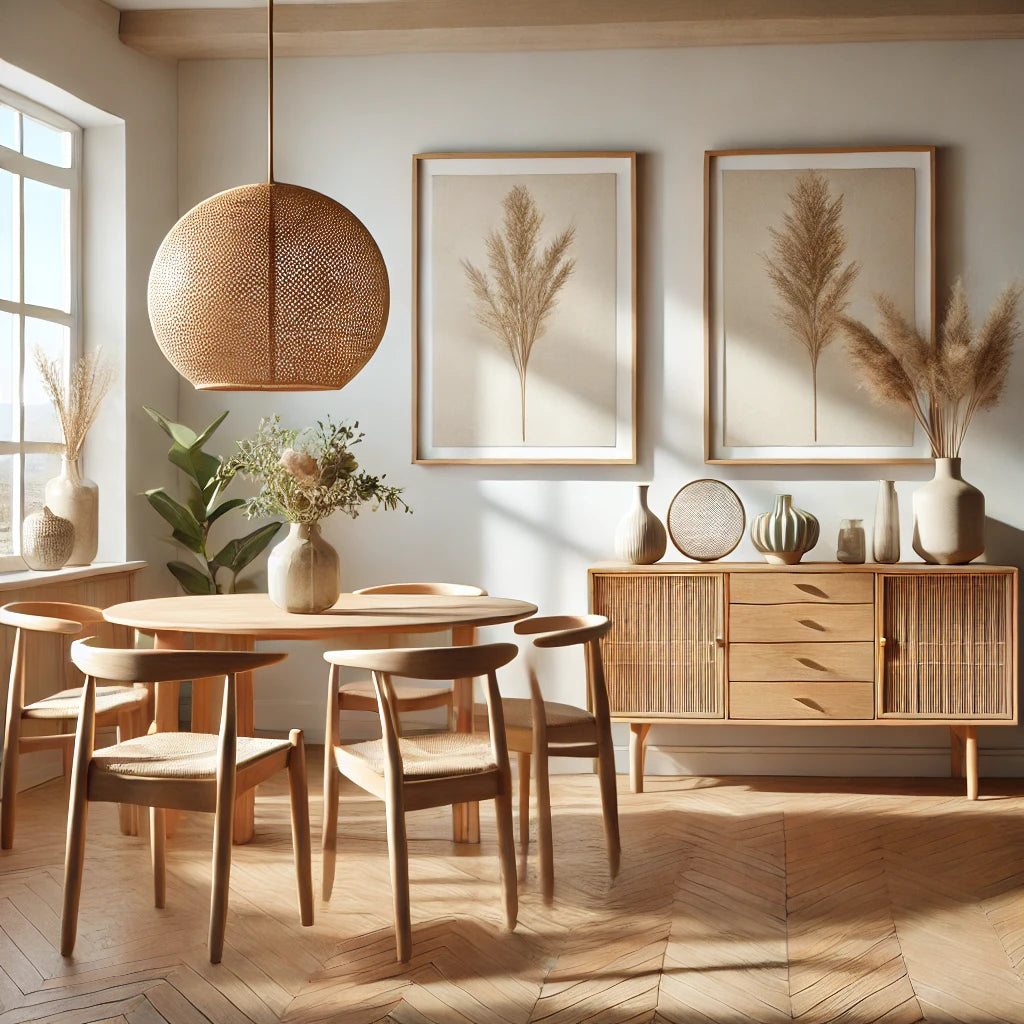A Tale of Two Design Eras: Scandinavian and Mid-Century Modern Furniture.
by Robert William on Sep 11, 2023

Scandinavian vs Mid Century Modern.
Ummm, Whats the difference?
Both are known for their clean lines, simplicity, and functionality, but they each have their own distinct characteristics. In this article, we will delve into the intricacies of these design trends to help you understand the differences and choose the right style for your home. Scandinavian design, with its focus on minimalism and natural materials, originated in the 1950s and comes from the Nordic regions. It embraces light and airy spaces, with light-colored furniture and a cozy, welcoming atmosphere. On the other hand, Mid Century Modern design emerged in the mid-20th century and is characterized by its sleek, retro-inspired aesthetic. It combines organic shapes with bold colors, and often incorporates vintage pieces for a nostalgic feel. By understanding the unique features of these two design styles, you can make informed decisions about how to bring them into your own space. Whether you are drawn to the simplicity of Scandinavian design or the retro charm of Mid-Century Modern, this article will provide you with the knowledge you need to create a beautifully curated home that reflects your personal style.
Scandinavian Furniture vs Mid Century- A Primer
Scandinavian
Minimalism: A focus on simple, uncluttered spaces with clean lines and minimal ornamentation.
Functionality: Every piece serves a utilitarian purpose; decorative elements are generally understated and functional.
Natural Materials: The use of organic materials like wood, wool, and leather is prevalent. Sustainability is often a consideration in material selection.
Neutral Colors: A palette dominated by whites, grays, blacks, and beige, often complemented by natural wood tones.
Natural Light: A focus on maximizing natural light, often achieved through large windows and strategically placed lighting elements.
High Quality Craftsmanship: Attention to detail and a focus on quality, both in terms of materials and craftsmanship.
Clean Lines: Whether in architecture, furniture, or accessories, lines are clean and forms are streamlined.
Harmony and Balance: Overall, the design aims to create a harmonious and balanced environment that fosters well-being and relaxation.
Mid-Century
-
Geometric Forms: A coffee table with a geometric wire base and a circular glass top.
-
Mixed Materials: A lounge chair combining a leather seat with a chrome or wooden frame.
-
Earthy Tones: A mustard-yellow upholstered sofa with tapered wooden legs.
-
Open Floor Plans: A modular seating arrangement that can be easily reconfigured to suit open-concept living spaces.
- Iconic Pieces: The Eames Lounge Chair, characterized by its bent plywood shell and leather upholstery.
-
Ornamentation: An area rug with bold, abstract patterns to complement the minimalist furniture.
- Integration with Nature: A teak credenza featuring sliding glass doors, allowing for a view of the items inside while also reflecting the natural surroundings.
Scandinavian Furniture
with its focus on minimalism and natural materials, originated in the 1950s and comes from the Nordic regions.
It embraces light and airy spaces, with light-colored furniture and a cozy, welcoming atmosphere. The key to Scandinavian furniture is simplicity. It is characterized by clean lines, functionality, and a sense of calmness.
One of the main characteristics of Scandinavian design is the use of natural materials. Wood is often used for furniture, flooring, and other elements. It brings warmth and texture to the space, creating a connection to nature. Another important aspect of Scandinavian design is the emphasis on natural light. Large windows are common in Scandinavian homes, allowing for maximum daylight and a feeling of openness.
In terms of color palette, Scandinavian design tends to favor neutral tones, such as whites, grays, and light pastels. These colors create a serene and calming atmosphere. However, pops of color can also be incorporated through accessories or artwork to add visual interest. Scandinavian design also places a strong emphasis on functionality. Furniture is typically designed with a purpose, and clutter is kept to a minimum.
Understanding Scandinavian Furniture
Scandinavian dining tables
epitomize the region's design ethos, marrying form and function with an uncanny grace that seems effortlessly simple, yet meticulously planned. Known for their clean lines and minimalist features, these tables often feature natural wood tones, capturing the essence of the Nordic environment. You won't find intricate carvings or lavish embellishments; instead, the focus is on the purity of form seen mostly in the elegant tabletop edge profiles, to the subtle tapering of the legs. From round shapes to elongated rectangular forms, the designs advocate for open, airy spaces, making them ideal for modern dining rooms where light and space are at a premium, and a visual lightness are desired.

Mid-Century Modern- What's it all about?
When it comes to Mid-Century Modern furniture, two terms often pop up that capture its essence: 'sleek' and 'retro.' But what do these words really mean in this context?
The term 'sleek' refers to the design's streamlined, polished appearance, often featuring clean lines and a minimalist approach.
On the flip side, 'retro' harks back to the design trends of the mid-20th century. From the use of teak wood (which is used less and less today) to iconic shapes like the boomerang or “amoeba” coffee tables shapes. Retro' in Mid-Century Modern design is all about capturing the nostalgic elements of the past. What does that mean in the context of mid century Modern? Read on…

One fascinating layer to the 'retro' aspect of Mid-Century Modern design is its infusion of space-age aesthetics and futurism. The mid-20th century was a pivotal era marked by groundbreaking advancements in science and technology, most notably the Space Race. This period's collective imagination was captured by the promise of space exploration, moon landings, and the idea that a futuristic utopia was just around the corner.
In furniture design, this manifested as pieces that exuded a sense of futurism. Think of iconic items like the Eames Lounge Chair or the Noguchi Table—both classics that felt revolutionary in their time, almost as if pulled from the pages of a science fiction novel. Materials such as molded plastic, fiberglass, and even Lucite began to appear, offering a gleaming contrast to the natural woods that were also prevalent Yet, these retro characteristics are often updated for today's lifestyle, blending seamlessly with contemporary materials and finishes.
In terms of furniture, Mid-Century Modern design often incorporates vintage or retro pieces. These can be original vintage finds or reproductions inspired by the era. The furniture is typically sleek and streamlined, with clean lines and minimal ornamentation. Mid-Century Modern design also embraces open floor plans, allowing for seamless flow between different areas of the home.
Ideas for combining these two styles

Summary: How to Blend Scandinavian and Mid-Century Modern Design
-
Mixed Material Palette: Use a Scandinavian wooden dining table paired with Mid-Century Modern metal or wire-frame chairs. This blends the natural elements from both styles.
-
Harmonized Color Schemes: Opt for neutral shades typical of Scandinavian design, like whites and grays, but add pops of earthy Mid-Century colors like mustard or olive green through throw pillows or wall art.
-
Layered Textiles: Combine minimalist Scandinavian rugs or throws with the more patterned or textured textiles common in Mid-Century Modern design. The understated textiles can serve as a base to the bolder, more ornate Mid-Century pieces.
-
Focused Lighting: Incorporate Mid-Century Modern pendant lights or sputnik chandeliers over Scandinavian furniture settings. The geometric shapes of Mid-Century Modern lighting fixtures can add depth to the minimalist Scandinavian setup.
-
Iconic Pairings: Place an iconic Mid-Century Modern piece like an Eames chair or Noguchi table in a room largely defined by the clean, minimalistic lines of Scandinavian design.
-
Functional Accessories: Mix Scandinavian functional storage solutions like modular cabinets or shelving units with Mid-Century Modern decorative elements like sunburst mirrors or abstract sculptures.
Indoor Greenery: Both styles embrace a connection with nature. A well-placed indoor plant can bridge the two styles, whether placed in a simple Scandinavian pot or a more elaborate Mid-Century Modern planter.













